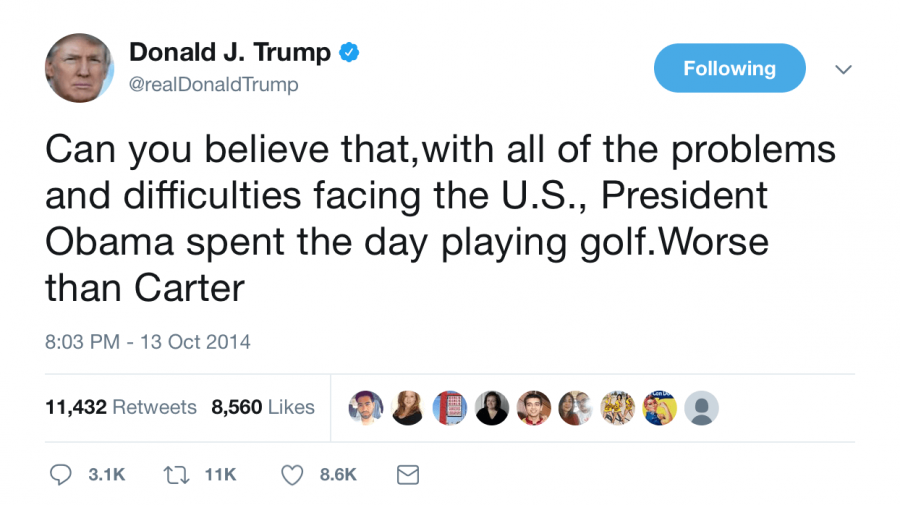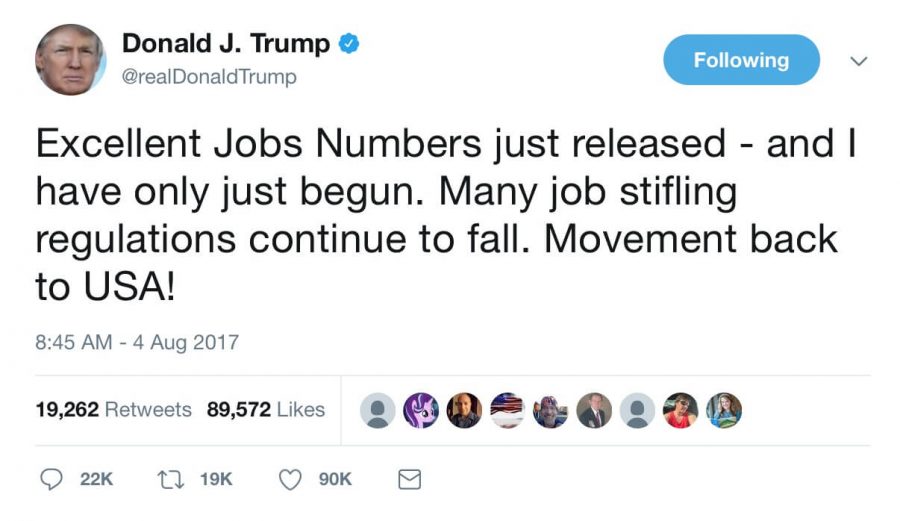As part of its internship program, Navigator asks its interns to write a blog post about the intersection of communications and an area of personal interest. This week, Meredith Wilson-Smith examines the interplay of art, politics, and marginalization.
Intersectionality, systemic oppression, internalized misogyny: what do these terms have in common?
Maybe they all made you roll your eyes and write this article off as pedantic. But their shared application to marginalized communities relates to one central question: who do you support? As technology develops and expands, this question becomes increasingly relevant.
Politics worldwide have polarized. It takes a couple of clicks to directly contact a politician, and debates are radicalized as people quickly and anonymously spread oftentimes discriminatory viewpoints. We’ve seen this throughout the past year, during the 2016 US presidential election and the 2017 French presidential election. Though these events have inured us to radicalization, they’ve revealed a lesson: dichotomy insulates communities. People are increasingly discouraged from communicating or empathizing with communities outside their own. To express this, they turn to the Internet.
Freedom of speech doesn’t exist in a vacuum. Politically-engaged people seek accessible platforms to express their opinions. Social media is malleable and easily connects like-minded individuals. But it’s dangerous to cloister yourself. As similar viewpoints stoke one another, the buildup of increasingly inflammatory opinions can fuel a harmful collective rage.
Sociologist Alberto Melucci used the term “cognitive liberation” to describe the “awakening of an individual’s awareness of the issues surrounding a movement and a reframing of the world through that issue.” The knowledge that one is not alone inspires a collective demand for solidarity and mobilization in the face of subjugation. Online communities turn otherwise marginalized experiences into a collective narrative that propagates action among group members. As individuals are inspired by peers, they’re initiated into the same movement and gain a link to thousands of others. This is happening on both the left and the right among groups who are confronting both real and perceived subjugation.
One of the darker elements of this mobilization is the ease with which hate crimes can easily be organized online. Canadian anti-Islam group III% found its roots in a Facebook group. Since their founding, members in the U.S. and Canada have been arrested for numerous offenses. These include shootings at Black Lives Matter rallies and an assault at a Canadian Journalists for Free Expression event. During the US election, several pro-Trump rallies were organized through Facebook events, with attendees such as Internet-famous Kyle Chapman (known amongst the alt-right as “Based Stickman”) urging followers to “smash [protestors] on sight”. Arguably most significantly, the “Unite the Right” Rally recently took place in Charlottesville. The far-right gathering in Virginia killed three people, injured at least 38, and, critically, was largely organized online.
Not all Internet-organized protests are prejudiced and violent. The 2017 Women’s March to advocate for gender equality and human rights was planned over Facebook. An estimated five million people participated worldwide. No arrests were made. And the fact that this protest immediately followed Donald Trump’s inauguration raised an interesting point about the increasingly gendered nature of partisanship.
The Week columnist Ed West makes the point that the difference between the social justice left and the alt-right is one of the most gendered divides possible. As 53% of men dominated Trump’s voter base and women voted overwhelmingly to elect Hillary Clinton, the candidates’ disparate views drove their supporters’ gendered radicalization.
Clinton’s female supporters rallied out of fear of Trump’s anti-female braggadocio, as he undermined women’s legal, healthcare, and employment rights. They found solace in the accessible feminist communities of the left online. Similarly, Clinton’s achievements threatened many of Trump’s white, male voters. Her gender, ambition, and socioeconomic class represented a voice they couldn’t relate to at a time when they already feared change. Thus, many Trump supporters united to blame those races, sexual orientations, and religions unfamiliar to them. They hid their fears with a username as alt-right forums assuaged their insecurities with reassuringly homogenous faces and viewpoints.
Trump’s supporters respond to directness and uniformity. This is reflected in the political right’s passionate yet plainspoken statements and calls to action. Trump’s blunt threats towards North Korea, such as a promise to bring “fire and fury” via nuclear bombs are the new normal in politics. When President Trump banned foreign aid for groups abroad that provide abortion counselling (or those that so much as mention the word “abortion”), he did so surrounded by six smiling men in suits. Photo ops with Trump’s all-male staff strategically bank on the support of his largely homogenous voter base as evidence of the fulfillment of the president’s male-centric promises.
As “social justice warriors” (as Trump’s supporters derisively call those on the left) represent a more vocal and diverse community, their online manifestations take different forms. The female existence was politicized long before the Internet, but recent Internet art culture is allowing those ideas to spread like wildfire. The social left — particularly established feminist groups — are using the same platforms as the alt-right in order to express and distribute their thoughts in ways that respond to and resist the oppressive climate within which they live.
At a time of international political instability, women aren’t guaranteed safety. When left-wing and feminist groups have attempted to counter alt-right protests with their own, women were openly attacked by male alt-right protesters. The Internet has become a place for women to carve out the autonomous spaces that aren’t otherwise available to them in the public sphere.
Consider Cindy Sherman, the American artist who photographs women in common female personas, from middle-class housewives to sullen teenagers. The artist emphasizes femininity to the point of absurdity, alienating viewers by distorting the familiar. Sherman’s art proves the fruitlessness of crafting a false identity despite the expectation for women to appeal by doing so. It’s fitting, then, that Sherman made an Instagram account this year, as women have been forced online to defend their self-identity and find community. Using face-editing apps that women often use to improve their appearances, Sherman distorts her face grotesquely. Posting these pictures publicly in a culture where the US President casually calls women “fat”, “flat-chested”, “unattractive”, and “crazy” is defiant. As Sherman shares that defiance with thousands of followers, she makes a statement against the culture that diminishes women by politicizing their appearance.
The Guerrilla Girls are another example. The anonymous group of feminist artists has fought sexism and racism in the art world for over 30 years. When they began in 1985, the group collected data about female representation in museums and made posters reflecting their discontent. Their discussion of issues such as tokenism and the wage gap in the art world reflected the attitude towards women in the larger sphere of employment. With the advent of the Internet, the group has been able to recruit new members, connect with museums, and host workshops and exhibitions to continue to fund and publicize their activist efforts.
Radicalization is common today. Female artists such as Sherman and the Guerrilla Girls are viewed as “radical” because they challenge existing social norms and institutions that hurt women from outside the political process. Their digital communication has personalized and politicized the consumption of and response to feminist art. Even if art isn’t explicitly feminist, it’s being increasingly consumed through a political lens as feminism proliferates online through left-wing activism.
It’s arguably dangerous that individuals are radicalizing as politics radicalize. The Internet surrounds them with communities eager for their opinions. Art expresses emotion – it incites and mobilizes. In that case, it could be argued that feminist art online perpetuates the emotionally-motivated culture of violence. The dissemination of accessible and political art is powerful. But a potential threat doesn’t equate evil. Art is also often opaque in its intent, leaving interpretation up to the viewer. This means that one art piece online can bring together communities with vastly varied knowledge and experiences. Those people have the capacity to engage with, learn from, and listen to one another. In that way, art reduces radicalism.
Art should be encouraged to thrive online. The Internet is an egalitarian aggregator of voices, which gives it limitless political weight for candidates and protestors alike. Individual works of art don’t reduce misogynistic behavior. But thanks to the online networks we use daily, the social awareness of art-centric communities does make a difference. They educate and unite. In a culture where the new normal is nuclear threats and neo-Nazi rallies, there’s comfort in that connectivity.


